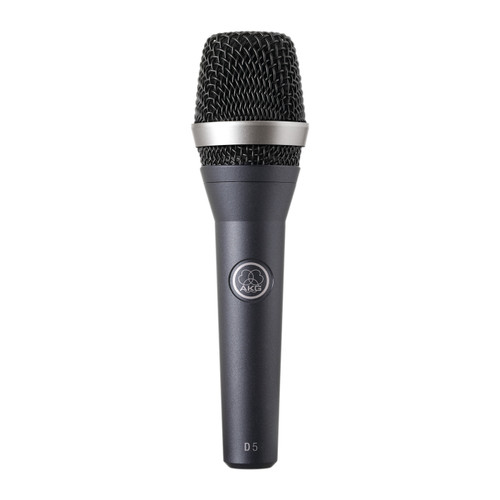The AKG D40 dynamic instrument microphone can handle the demands of even the busiest stages.
The D40 dynamic instrument microphone is built to stand up to the demands of even the busiest of stages with an all-metal body that protects all the elements that make for excellent sound. Its cardioid polar pattern and integrated stand adapter make it well suited for drums, percussion, wind instruments, and guitar amps.
Part of the excellent sound quality in the D40 is its patented Varimotion diaphragm. This diaphragm uses a unique laminated material to damp high resonance peak, improving audio performance by leaps and bounds.
A key to instrument microphone applications – particularly drums, wind instruments, and guitar amps – is the ability to handle high sound pressure levels. The D40 instrument microphone can handle 147 dB SPL. This SPL handling is helped in part by transducer construction decisions: the transducer is protected by a sturdy wire-mesh cap.
AKG D40 Features
- Dual-thickness Varimotion diapraghm provides crisp, powerful sound in all frequency ranges
- Highest sound pressure levels up to 156dB for extreme situations without any distortion
- Cardioid polar pattern for trouble-free use in narrow stage environments
- Rugged wire-mesh cap and sturdy die-cast metal body withstand tough day-by-day stage use
- Integrated stand adapter and external bracket for easy mounting on drums and mic stands
- D40 Instrument Microphone1
- H440 Adapter Plate1
- Microphone Bag1
- Transducer TypeDynamic
- Polar PatternCardioid
- Frequency Response50 Hz - 20 kHz
- Output Impedance≥ 600 ohms
- Sensitivity2.5 mV/Pa
- Max SPL 147 dB
- Connector3-pin XLRm
- Dimensions
- Height: 104 mm
- Diameter: 44 mm
- Net Weight: 245 g
About Dynamic Microphones at Sound Productions
If you’re looking for an all-purpose, heavy-duty microphone, look no further than a dynamic microphone. Equally outstanding in both the studio and live on stage, dynamic mics are an affordable, versatile, and classic option for nearly every miking application. Popular uses include live performances, studio recordings, man-on-the-street style interviews, as well as podcasts that aim for a professional “radio voice” polish.
Dynamic microphones work using a coil attached to a magnet. When sound waves cause the coil to vibrate up and down against the magnet, an electromagnetic current is induced; in simple terms, this turns the sound into an electronic signal to be channeled into a recorded version or—in the case of live sound—into a speaker to distribute the sound to the audience.
























